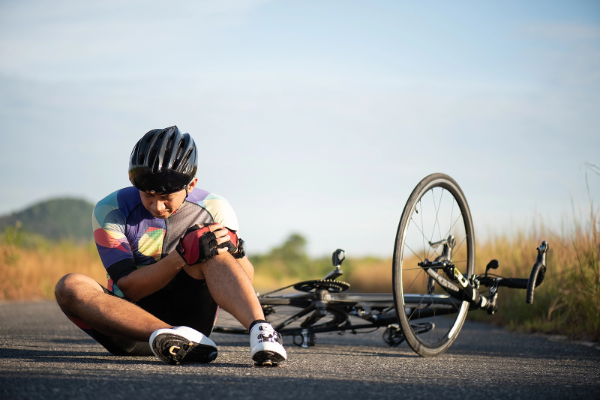Cycling is one of the most popular forms of exercise and transportation worldwide. It’s not just a fun activity; it offers numerous health benefits, especially for your legs. This article explores how cycling affects your leg muscles, the benefits it provides, and tips to maximize your cycling experience.
The Anatomy of Your Legs
Before diving into how cycling impacts your legs, it’s essential to understand the muscles involved. Your legs are made up of several key muscle groups:
Quadriceps: Located at the front of your thighs, these muscles are crucial for extending your knee.
Hamstrings: Found at the back of your thighs, these muscles help flex your knee and extend your hip.
Calves: The muscles at the back of your lower legs, responsible for ankle movement and stability.
Glutes: The largest muscles in your buttocks, essential for hip extension and power during cycling.
Muscle Engagement During Cycling
When you cycle, you engage these muscles in various ways:
Pedaling Action: The up-and-down motion of pedaling activates your quadriceps and hamstrings. As you push down on the pedal, your quadriceps contract. As you pull up, your hamstrings and calves come into play.
Stability: Your glutes and calves help stabilize your body on the bike, allowing for better control and balance.
Strengthening Your Leg Muscles
1. Increased Muscle Tone
Cycling regularly leads to increased muscle tone in your legs. This is especially true for your quadriceps and calves. As these muscles work to propel your bike forward, they become more defined and stronger.
2. Endurance Building
Cycling builds endurance in your leg muscles. The repeated motion of pedaling helps your muscles adapt to prolonged activity. Over time, you may find that you can cycle longer distances without fatigue.
3. Improved Muscle Balance
Cycling can help improve muscle balance between your quadriceps and hamstrings. Many people have stronger quads, which can lead to imbalances. Cycling helps develop both muscle groups evenly, reducing the risk of injuries.
Burning Fat and Calories
Cycling is an effective way to burn calories and fat. The energy expended while cycling comes primarily from your leg muscles.
1. Caloric Expenditure
Depending on your weight, cycling intensity, and duration, you can burn a significant number of calories. On average, a person weighing around 155 pounds can burn approximately 298 calories cycling at a moderate pace for 30 minutes.
2. Fat Loss
Regular cycling contributes to fat loss, particularly in your legs. As your muscles burn calories, they also help reduce fat deposits, leading to leaner, more toned legs.
Enhancing Circulation
Cycling improves blood circulation in your legs. Good circulation is vital for overall health and muscle function.
1. Increased Blood Flow
The rhythmic motion of pedaling enhances blood flow to your leg muscles. This increased circulation delivers oxygen and nutrients, which can improve performance and recovery.
2. Reduced Swelling
Improved circulation also helps reduce swelling in your legs. This can be particularly beneficial for individuals who experience swelling due to prolonged sitting or standing.
Injury Prevention and Recovery
1. Low-Impact Exercise
Cycling is a low-impact activity, which means it puts less stress on your joints compared to running or jumping. This makes it an excellent choice for individuals looking to strengthen their legs without the risk of injury.
2. Rehabilitation Tool
Cycling is often used in rehabilitation programs. It helps strengthen muscles while allowing for joint recovery. Many athletes turn to cycling after injuries to maintain fitness without stressing their injured areas.
Common Cycling-Related Leg Issues
While cycling offers numerous benefits, it’s not without potential issues. Here are some common leg-related problems cyclists may encounter:
1. Muscle Cramps
Cramps can occur during or after cycling, often due to dehydration or electrolyte imbalances. Staying hydrated and ensuring you have a balanced diet can help prevent cramps.
2. Tendonitis
Overuse of leg muscles can lead to tendonitis, particularly in the knees. It’s crucial to listen to your body and allow for rest and recovery when needed.
3. Knee Pain
Improper bike fit or pedaling technique can lead to knee pain. Ensuring your bike is fitted correctly can help prevent this issue. Regular stretching and strengthening exercises can also support knee health.
Maximizing the Benefits of Cycling
To get the most out of your cycling experience, consider the following tips:
1. Choose the Right Bike
Selecting a bike that fits your body is crucial. A proper fit helps prevent injuries and maximizes efficiency. Whether you prefer a road bike, mountain bike, or hybrid, make sure it suits your cycling style and needs.
2. Incorporate Variety
To work different muscle groups, incorporate various cycling activities. Try hill climbing, interval training, or long-distance rides. Mixing up your routine can prevent plateaus and enhance muscle development.
3. Maintain a Balanced Diet
A healthy diet is vital for fueling your cycling. Ensure you consume enough carbohydrates for energy, proteins for muscle repair, and healthy fats for overall health. Staying hydrated is also essential, especially on long rides.
4. Stretch Regularly
Incorporate stretching into your routine to improve flexibility and prevent injuries. Focus on your quadriceps, hamstrings, calves, and glutes to ensure your muscles stay limber.
5. Listen to Your Body
Pay attention to your body’s signals. If you experience pain or discomfort, take a break. Rest days are just as important as training days for muscle recovery.
Conclusion
Cycling is a fantastic way to strengthen your legs and improve overall fitness. It engages various muscle groups, enhances endurance, and promotes better circulation. While there may be some risks, proper technique and bike fit can help mitigate these issues. By following a balanced approach to training, nutrition, and recovery, you can enjoy the numerous benefits cycling offers for your legs and overall health. Whether you’re a beginner or a seasoned cyclist, the journey to stronger legs starts with the next ride.
Related topics:

